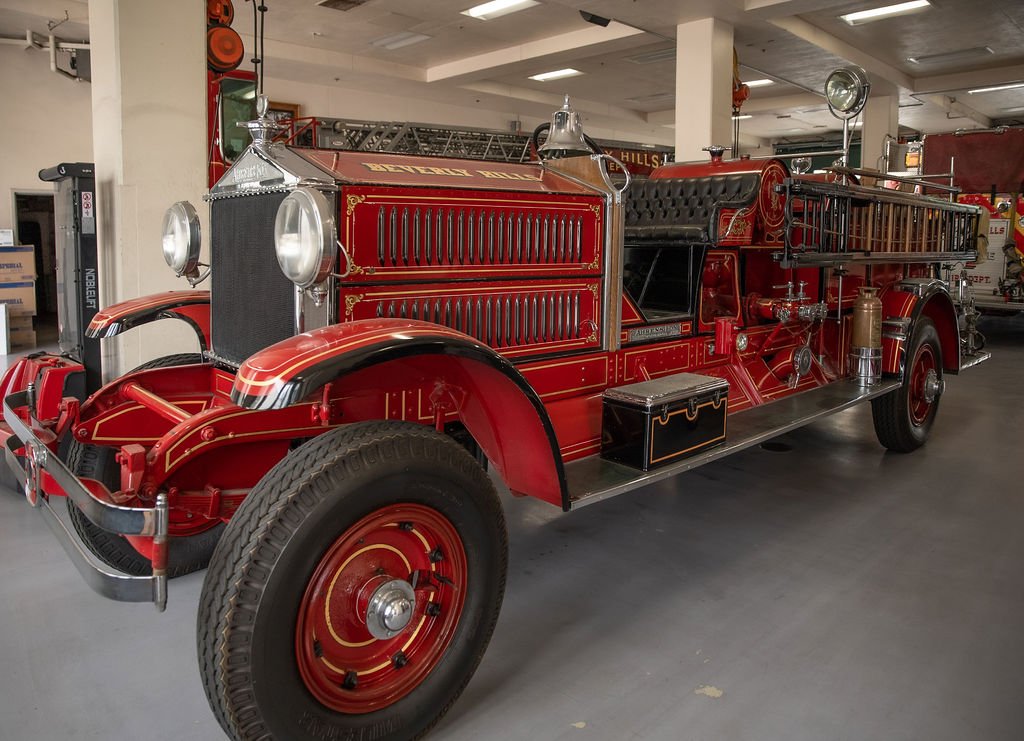Q&A: Get to know Greg Barton, Beverly Hills Fire Chief
- by Arielle Harris
With October being National Fire Prevention Month, we decided to catch up with one of Beverly Hills’ most notable local heroes: the city’s Fire Chief, Greg Barton. Over the last five years, he’s made great strides in helping the community as Fire Chief, and during his overall career as a firefighter, Barton has won Firefighter of the Year three times from the city. With a master’s degree in public administration and countless certificates in defense, leadership, firefighting, and emergency management, it is no surprise that he is a staple to the city of Beverly Hills.
What influenced you to accept the role as the Beverly Hills fire department Fire Chief?
I went to school at UC Davis and played baseball up there, not having the idea that I wanted to be a firefighter. During the summer, they have a wildland fire program that I did and eventually got hired by the forest service. I tested everywhere – 40 different departments to be specific. I was fortunate enough to be selected here in Beverly Hills as a firefighter. I've just worked my way up the ranks and held every position from firefighter to fire inspector to fire captain, shift battalion chief, fire marshal, deputy chief, and then was fortunate enough to be selected to be the Fire Chief in 2017.
What do you enjoy most about working as the BHFC?
The community's outstanding; talking and meeting with them and hearing the great level of service that is provided by the Beverly Hills firefighters -- that is truly the best part of this job. We’re a small town and tight-knit community that cares about the fire department, cares about all city employees. No other community recognizes the services that the fire department provides like this community does.
What’s changed since you took over?
Over the last five years what's really changed is our nurse practitioner program. We found that there are people falling through the cracks in medicine. If you go to Cedars or you go to a hospital, you get released and they tell you to go see your medical doctor. Well, some people don't go see their doctor. So the nurse practitioner program helps us follow up on every single medical call that we've had. The program has two parts, a reactive side and a proactive side. On the reactive side is where we respond with the engine and rescue team. If somebody trips, falls, and only needs stitches, we'll determine that you don't need to go to the ER. So we'll call the nurse practitioner unit out, they'll stitch that person up in the field and then send them home on their way. It's free for the patient – fully funded by the city. The proactive side is where we’re seeing a better bang for our buck because we go out there and check on people who have those overlooked medical needs post-hospital release. The nurse practitioner goes out and provides care. In-home care enables patients to age in place and get that level of service that they wouldn’t get in any other community.
Can you share some more about the Women’s Fire Alliance and Girls Empowerment Camp?
The Women’s Fire Alliance is designed to prepare women 18+ for the physical aspect of the firefighter testing process and the overall job. Within the program, women prep for the physical agility exam, the ins and outs of the job, and removes the stigma around not being able to do the job. This career can be for those who want to join regardless of gender.
While the Womens’ Fire Alliance focuses more on the training aspect, the Girls Empowerment Camp focuses on recruiting to get more women interested in fire service. This would be for girls under 18. If we start recruiting and teaching about the fire service at a young age, women will be more apt to join once of age. We bring in men and women firefighters to introduce what to do to get into this career.
What keeps you motivated to keep going every day?
I love helping people, this community, the firefighters, and the camaraderie. No matter what disagreements might be out there, when the bell goes off, everybody comes together to serve this community and do the best that they can for the people that we serve. To see that you're able to help somebody or seeing that you're making a difference, that’s really the best part.




